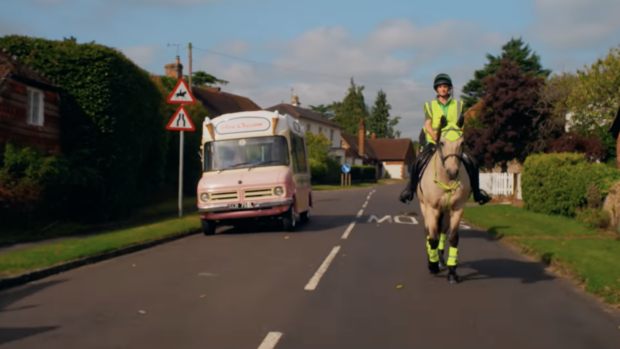Could the current tough climate — both in terms of weather and economics — lead someone to abandon a horse or pony in your field?
This is the situation faced by dairy farmers Margaret and Robert Bailey of Biddulph in North Staffordshire, who were surprised to find two ponies grazing with their cows on Sunday, 14 November.
“The field has a roadside gate so someone popped them in overnight,” said Mrs Bailey.
The Baileys rang the police thinking the ponies may have been pushed into their field to get them off the road.
But, two weeks later, the small chestnut (pictured) and iron grey are still grazing with their herd.
“We rang World Horse Welfare and they advised us to put a note on the gate saying that if the ponies were not removed within a week we would claim ownership and dispose of them.
“We have done that and no one has come forward. But my concern is that I am now responsible for them and they will need passports and feeding in this cold weather.”
Horse passports cost from £10-£30, depending on the issuer and hay prices are as much as £7 for a small bale.
A spokesman for World Horse Welfare said it regularly gets calls from landowners who have found horses in their fields.
“We always advise them to contact a lawyer, preferably an equine lawyer,” she said.
“There is a legal process which owners can follow to resolve such situations, but they should seek proper advice, which we cannot offer.”
Tony Tyler, deputy chief executive of the charity, said: “We are extremely sympathetic to the plight of landowners who find themselves in this situation.
“But unfortunately, World Horse Welfare is generally unable to take in these horses.”
Horse dumping is rife in some parts of Ireland.
David Lalor of Hunting Association of Ireland said: “Farmers regularly find horses left on their land. We try to advise them, as does the Irish Farmers Association.”
As H&H went to press, an RSPCA officer was due to visit the Baileys to check the ponies for microchips or other identifying marks.
And Staffordshire Police said it would conduct investigations locally to try to find out who owns the ponies.
This article was first published in the current issue of Horse & Hound, 2 December 2010




